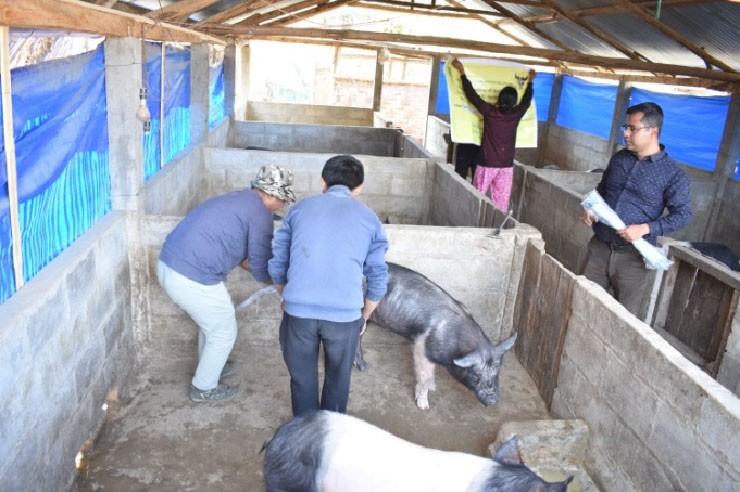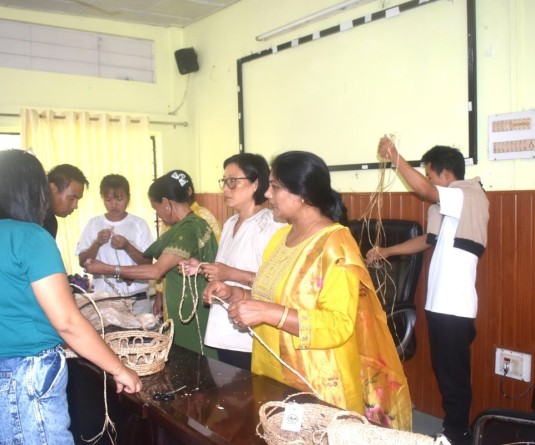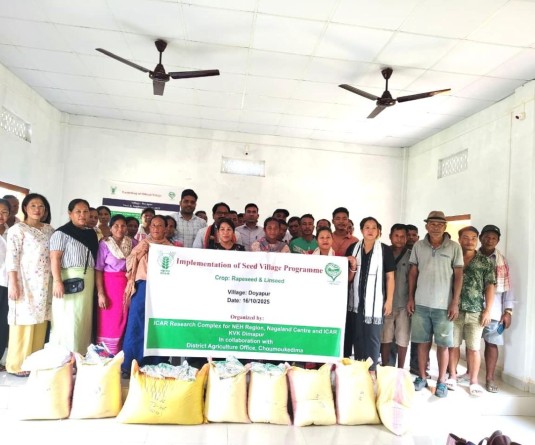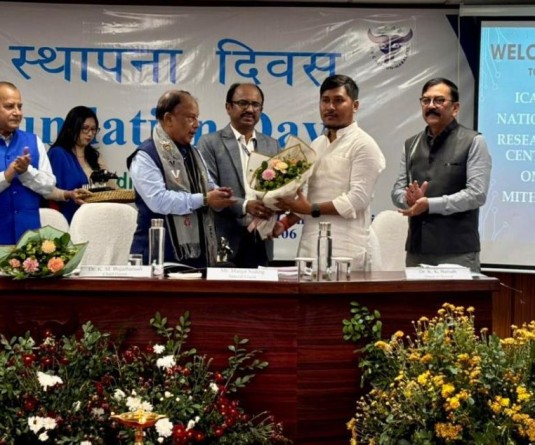
Economical pig production warrants the high reproductive efficiency of the sows. In Nagaland condition, this means production of minimum 20 numbers of piglets per sow in a year from two farrowings. However, this is seldom achieved because of one or other reason. Pig production system in Nagaland is dominated by small holders in which reproductive efficiency is least priority. Here, we describe a new technology of estrus synchronization and fixed time artificial insemination in pig to improve the reproductive efficiency of pig. This technology can be adopted by small farmers. However, for commercial farms, this technology is a boon.
Pig population in Nagaland is around four lakhs (2019), which has decreased from 2012 livestock census. The per capita consumption of pork is highest in Nagaland. However, the state is deficient by almost 50% in pork and depends upon imports from other states. In long run, this is not economical and environmentally sustainable. The pig production system in the region is low input and low output with rearing of two to three pigs per household. Here, pigs are reared in traditional way with use of outdated technologies. Reproductive efficiency in this system is very low. The farmers here preferred fattening system over breeding system. The reasons for low reproductive efficiency of pig in Nagaland are i) Lack of knowledge about breeding; ii) Unavailability of breeding boars; iii) high cost of natural breeding; iv) inbreeding due to prolonged use of same boar in a village; v) over use of breeding boars. However, with artificial insemination coupled with estrus synchronization, these constraints can be addressed.
What is estrus synchronization?
The key reproductive events that determine the reproductive output of sow is beginning of estrous cycle. In sow, the estrous cycle duration is 21 days. In estrous cycle, estrus phase is most crucial as this is the window during which breeding takes place and this is only identifiable period. Estrus last for two days in gilt and three days in sow. Estrus synchronization is the technology by which estrus in large numbers of gilts or sows is expressed at given time. This can be done by several methods including hormonal and non-hormonal. Later includes, synchronized weaning, boar parading, biostimulation and transportation stress. Hormonal methods include injection of cocktails of hormones or oral administration. The most common hormonal method is use of PG600. This contains 400 IU of pregnant mare serum gonandotrophin (PMSG) and 200 IU of Chorulon. However, readymade PG600 is not available in India. Therefore, necessitates mixing of these two hormones at the time of administration. Also, PG 600 was developed for European and American pigs. In general, body size of pigs in Europe and USA is larger than in India. Therefore, it warrants development of estrus synchronization protocol suitable for Indian condition.
ICAR Research Complex for NEH Region, Nagaland Centre, Medziphema has developed a new protocol for estrus synchronization in pig. In this, healthy non-pregnant animals are selected for estrus synchronization. For this, age of gilt should be 10 months or above and sow should have weaned 15 days before start of treatment. The animal should be de-wormed before start of estrus synchronization protocol. Also, the animals should be given 20 gram of mineral mixture daily in the feed. Then, the animals are injected with 300 IU of PMSG and 150 IU of Chorulon. For ten animals, mix three vials of PMSG and one vial of Chorulon in thirty mL of sterile water. Inject three mL to each animal in vulvar submucosa or at neck region intra-muscularly. The animals should be observed in morning and evening for estrus. In this protocol, animals will exhibit estrus within 48 to 96 hours of injection. Artificial insemination can be done after 20 hours of estrus exhibition in gilts and after 30 hours in sows. Artificial insemination should be repeated after 12 hours. It is important to note that timing of AI is very important to get good farrowing rate and litter size. With this protocol, 80 to 90% animal comes into estrus.
Advantage of estrus synchronization and fixed time AI in pig:
i) It is easy and cost effective compared to natural breeding.
ii) This technology facilitates introduction of new genetics in a short period.
iii) Sows in a village can be bred at one time and therefore, save time and money.
iv) It increases reproductive efficiency of farm and helps in obtaining two farrowing per pig in a year.
v) This is of much importance to pigs in remote area.
vi) Helps in better management of animals during pregnancy and farrowing.
vii) It facilitates better record keeping.
viii) Piglet crop will be uniform in age and size. Better marketing opportunities.
ix) If a sow is not giving sufficient milk then its piglets can be fostered at other sows.
Success story
ICAR Nagaland Centre in collaboration with KVK Porba has demonstrated this technology in far flung area of Nagaland. In March 2021, 30 numbers of sows and gilts were selected for estrus synchronization in Pfutsero block of Phek district. Estrous synchronization was done with new protocol developed by ICAR Nagaland Centre. Out of 30 pigs, 24 came into heat within 72 hours and were inseminated with AI technology of our Centre at once. At the end of gestation period, 20 pigs farrowed (farrowing rate 83%) and gave births to 142 numbers of live piglets. The value of piglets produced at Pfutsero is Rs.9.94 lakhs (Rs.7000/- per piglet). Within a four months period, the farmers earned the profit from adoption of modern technology. This is the first time that at a remote place, estrous synchronization and artificial insemination technology was demonstrated. The farmers are very happy after seeing the result. Artificial insemination coupled with estrous synchronization reduced the breeding cost significantly and improved the reproductive efficiency. For further details contact ICAR Nagaland Centre, Medziphema.
Article contributed by Mahak Singh, R Talimoa Mollier, Nungshitula Pongener, RN Paton and DJ Rajkhowa, ICAR Research Complex for NEH Region, Nagaland Centre, Medziphema






